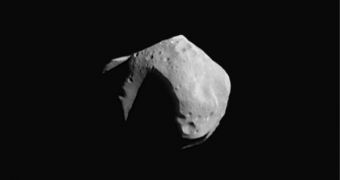A French-Italian collaboration has yielded one of the most important astronomical tools in the recent years, namely a method of detecting and thoroughly measuring asteroids as small as 15 kilometers in diameter, via the use of a technique called interferometry. It can only be applied in the case of the European Southern Observatory (ESO)'s Very Large Telescope Interferometer (VLTI), and has the potential to increase the knowledge of the asteroid in the giant belt of our solar system several times.
"Knowledge of the sizes and shapes of asteroids is crucial to understanding how, in the early days of our Solar System, dust and pebbles collected together to form larger bodies, and how collisions and re-accumulation have since modified them," the leader of the current study detailing the technique, Marco Delbo, an astronomer at the Observatoire de la Côte d'Azur, in France, explains.
Thus far, direct imaging (featuring adaptive optics) and radio measurements have been the preferred methods of tracking down the celestial bodies, but their power has limited the number of asteroids that could be traced to as little as 100, the largest of them all. The new method has the potential to recognize and provide crucial data about very small chunks of rocks, which are situated more than 200 million kilometers away from Earth. This level of precision is unique to the VLTI, and no other observatory in the world can, at this moment, boast such a technology.
"This is equivalent to having vision as sharp as that of a telescope with a diameter equal to the separation between the two VLT Unit Telescopes used, in this case, 47 meters," astronomer Sebastiano Ligori, a scientist at the INAF in Torino, Italy, and also the co-author of the study, says. He and Delbo maintain that interferometry relies on combining data from two or more different light sources, thus obtaining a picture of the object from several angles, which then helps them map a partial 3D sketch of the object. This is very helpful in determining its size, composition, and probable method of formation.
Following the successful testing of the new technique, the researchers will now focus their efforts on the asteroid belt, in hope of identifying as many asteroids as possible, and averting a potential disaster on Earth, triggered by such a celestial body that can easily remain unaccounted for.

 14 DAY TRIAL //
14 DAY TRIAL //